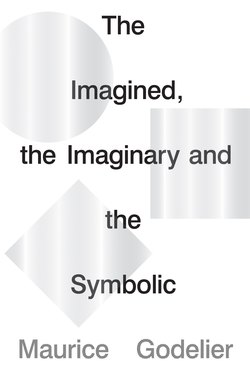Читать книгу The Imagined, the Imaginary and the Symbolic - Maurice Godelier - Страница 11
На сайте Литреса книга снята с продажи.
ОглавлениеCHAPTER TWO
Consciousness and the Mind
To be conscious is always to be conscious of something. There is no such thing as empty consciousness.1 And everything of which the conscious mind is conscious means something to it. Consciousness is therefore also thought. It is an act of the mind, which at the same time attaches meaning, significations, to the things targeted by consciousness. So consciousness is that whereby the thinking of an individual, of a subject (whom we will call ego), directs itself mentally towards an ‘object’, whatever it may be. This ‘object’ can be information provided by the person’s own body, internal sensations; it can be the perception of an object or a set of objects outside the self; it can be the desire to paint or to answer a phone call; and so on. Consciousness is thus a continuous series of acts aimed at objects which each time take on ‘meaning’ for the conscious mind. The intentionality of the conscious mind has nothing to do with the intentions an individual may have to do or not do something. The intentionality of the conscious mind is the act whereby the mind defines and operates the meaning of the object viewed as a concrete object, or as a mathematical ideality, or as an imaginary world, or as a relation between things or people, and so on.
‘Meaning’ exists only for a conscious mind; the only meaning is that given, produced by the mind. There is no such thing as an isolated intentionality, for a targeted ‘object’ is always part of an encompassing whole. We do not listen to Beethoven’s Fifth Symphony note by note. Likewise, the meaning of a sentence remains present, even as it is continually modified, until the sentence has been uttered in its entirety. The individual (ego) exists not only as a singular body, but also as the subject of all the intentional, conscious acts he or she performs simultaneously and successively.2 He or she exists as the centre from which these continuous acts emanate and as the place to which all experiences, ideas, emotions and desires associated with the individual’s conscious mind belong. In short, ego exists as a body, as thought and as subjectivity.
Therefore, if we are to perceive the faculties of the conscious mind, we must take a closer look at its structures. The conscious mind is conscious of itself. Sartre called the fact that it knows it exists ‘the great ontological law’ of consciousness.3 Ego’s consciousness is always already inhabited, even before birth, by the presence of the world around it: a specific natural environment, society, culture and language, and a particular time in history. Consciousness is also the internal consciousness of time. This consciousness exists in the present, but to this present are always attached elements of the recent past and the imminent future. But the conscious mind can also step back from the present the subject is living and from the world with which he or she is involved. It can represent to itself past events that once existed but no longer do. It can represent to itself future events whose realisation seems unlikely for the time being. We see clearly that if the ‘things’ that present themselves to the conscious mind have meaning for it, it is because the mind gives or has given them this meaning. It is by thought that consciousness can be both present in the present and, at the same time, make real or imaginary events retrieved from the past or projected into the future present by their absence. In short, the conscious mind has the capacity to step back from the experienced present while remaining present to it; and this faculty comes from the fact that the human mind can ‘imagine’.
More than a property, then, it is the very essence of the mind to be able to examine itself and to step back from its content. Reflexivity is constituent of consciousness. It is already present in ordinary, spontaneous awareness, since to be aware of something particular is both to target and to highlight this thing against the backdrop of underlying consciousness. And this highlighting immediately establishes a distance between consciousness and what it has highlighted. This is the first degree of conscious reflexivity.
But there is a second degree, which appears when the mind inquires into the nature of that of which it is conscious. The way, then, is opened to an attempt to understand the nature of the relations surrounding the subject: relations between things perceived, relations between other interacting humans, but also those between these humans and things. In this search for meaning, it is the subject that reveals and discovers itself, and that positions itself with respect to others and to things. The second degree of reflexivity available to consciousness opens the way to knowledge, art and the invention of religions, but also to the production of concrete skills.
Nevertheless, there is a fundamental constituent of consciousness I have not yet talked about, and without which we cannot understand the forms of reflexivity available to the conscious mind, nor the subject’s capacity to understand the world around them and their place, their identity within this world. The missing component is language. Language is immanent to consciousness and inseparable from thought. Before going into the analysis of language, however, it must be clarified that some thought processes are not conscious, but instead either underlie the operations of the mind (the rules of grammar of a language, for example), or belong to the deeper layers of the unconscious part of thinking. This clarification is fundamental because it precludes reducing our knowledge of the nature of the mind merely to the processes of which it is aware. The unconscious mind also contributes to the production of meaning, the meanings the mind gives to the world. We must not forget this.
